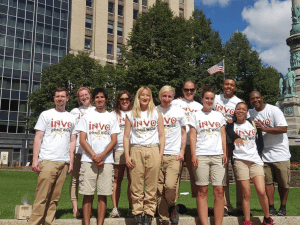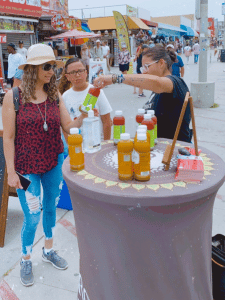Guerrilla marketing, or street teams, can offer a cost-effective way to introduce hundreds, or even thousands of consumers to your product. But if you’re not planning properly, you may find yourself underwhelmed with the results of this style of experiential marketing.
Today we’re going to give you insights on how guerrilla marketing can work for your brand!

In general, smaller brands should focus primarily on a sales-focused campaign. What does this mean? In a sales-focused campaign, you are pushing consumers to retailers that carry your product. One way to do this is by offering store-specific coupons. If your product is found at Sprout’s Farmers Market, offer a coupon with a list of stores that carry your product on the back. Of if you’re at Whole Foods, list the dates of your current or upcoming Whole Foods Market promotion.
In addition, on a sales-focused campaign, you’ll want to focus your guerrilla marketing activations near your target stores. While this may result in fewer people sampled compared to a higher traffic area, it will help ensure that the people you do sample are geographically able to purchase your product. If your product is only sold at Sprouts and your street team is handing out samples 15 miles from the closest Sprouts store, you likely aren’t going to see a lift in sales from that activation.

These brand-building focused activations tend to be larger scale than sales-focused campaigns. You can sometimes get by with 4-6 people on a sales-focused campaign. But to create buzz around a brand-building guerrilla marketing experience, you usually need something larger to create an experience consumers will remember. For this reason, brand-building activations tend to have a higher price tag.
It should be noted that the goals of sales and brand building are not mutually exclusive but having a primary and secondary goal will help you make choices about where to execute your events, how many samples to budget, and how large of a team you will need. Spending this time planning will pay off in the end.
If you’re still not sure which would be better for you – here are some guidelines:
- Are you in the top 5 retailers in the market where you plan to activate?
- Are you a leader in your category?
- Does your brand have high household penetration?
If you answered yes to most of the questions above, you are ready for brand-building activations. If you answered no to most of the questions above, we recommend sales-focused guerrilla marketing activations.
As we mentioned at the start, if used strategically, guerrilla marketing can be a cost-effective way to sample a large number of consumers. Need help planning and staffing your next campaign? Just ask!




